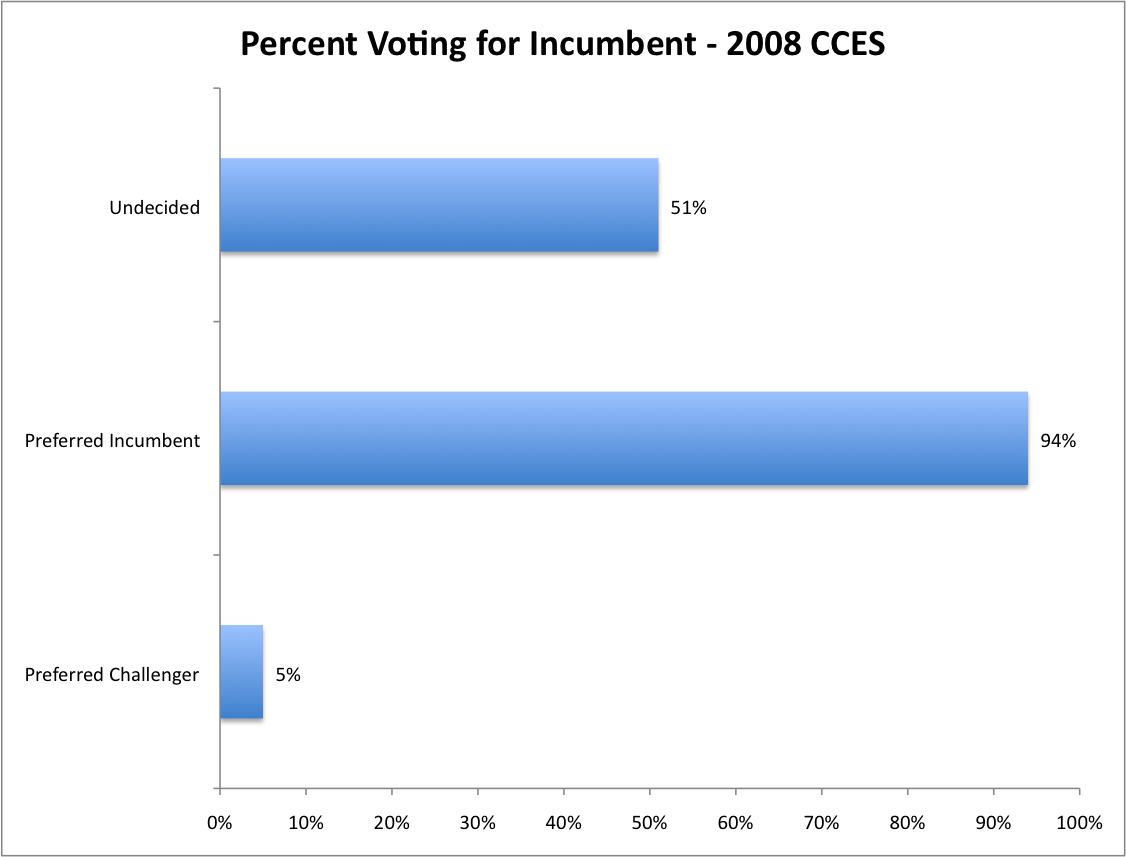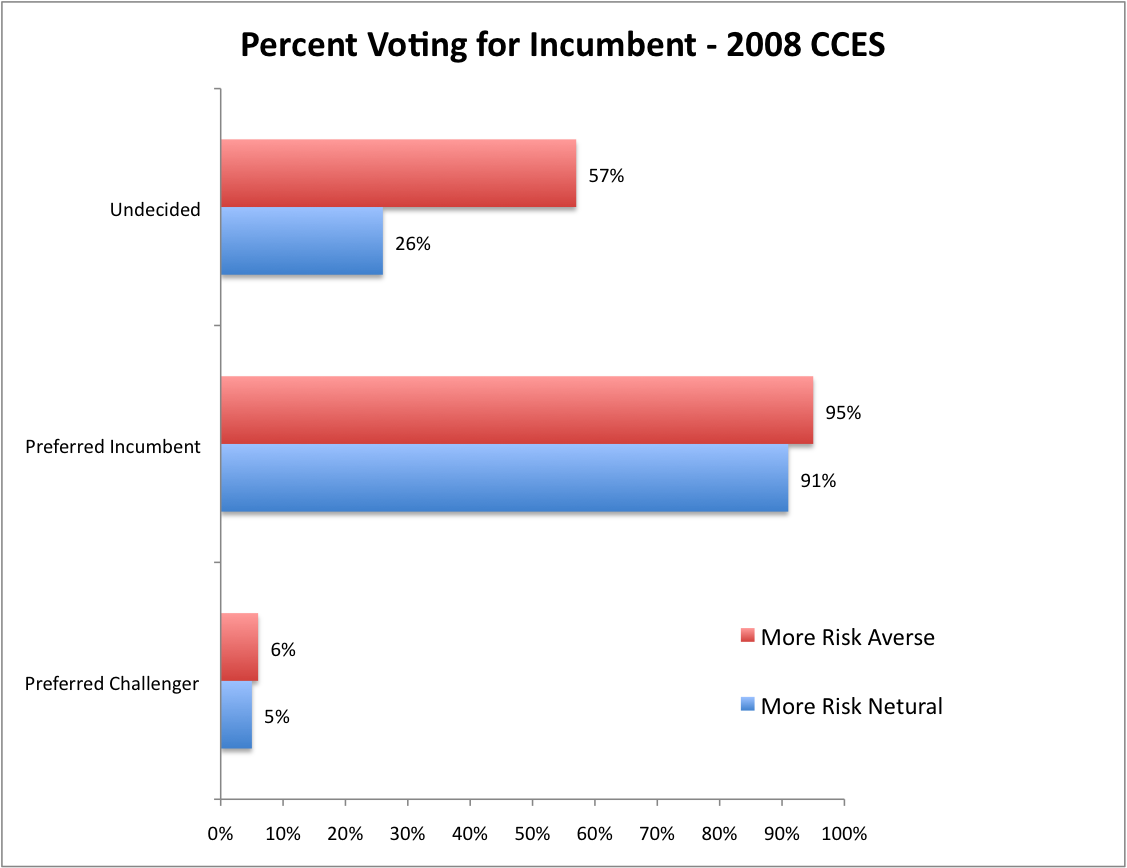
There is little doubt that 2010 will be a bad year for Democrats, with many Democratic incumbents likely to lose to Republican challengers in both House and Senate races. The real question is how bad it will be -- will enough Democratic incumbents lose to shift control of the House (and possibly Senate) to the Republicans?
While many things are working against Democratic incumbents this year, the public's tendency to be risk averse may make the difference in allowing some incumbents to win campaigns that they might otherwise have lost. In a recent paper, David Eckles and I show that voters who are more risk averse are more likely to vote for incumbent House members, even when controlling for a number of other factors. The general idea here is that voters will be less sure about what a challenger will actually do once in office, so if a voter is averse to risk-taking, this will make them more willing to support the incumbent even when the challenger appears to be a pretty good alternative. People treat consumer products similarly. For example, one study found that 40% of experimental subjects preferred their "incumbent" skin lotion brand to a "challenger" brand, even though they recognized that the "challenger" brand was superior.
In our analysis of vote decisions in 2008 House races, we find that risk aversion is such an influential force that it often causes voters to vote for the incumbent even though they recognize that the challenger's ideology is significantly closer to their own. Since the vast majority of citizens are generally averse to taking risks, this constitutes a significant advantage for any incumbent candidate.
Of course, many polls are showing that citizens seem to prefer the Republican challenger in their House and Senate races in spite of this risk aversion. The question is whether voters will act more risk averse when they actually go to cast their ballots than they do when they express a vote preference to pollsters. To gain some insight on this question, I looked back at the 2008 Cooperative Congressional Election Study (CCES), which was conducted by YouGov/Polimetrix (disclosure: I was part of a team that sponsored the module to the 2008 CCES that I analyze here). The CCES includes both a pre- and post-election survey of the same voters; therefore, I am able to compare whom a voter said they preferred in October to who they actually reported voting for in November. The chart below shows the percentage of respondents that ended up voting for the incumbent House candidate depending on whether they said in the pre-election survey that they preferred the challenger, the incumbent, or if they were undecided. Overall, those who had settled on a candidate in October almost always stuck with that choice. About 94% of those who planned on voting for the incumbent did so while only 5% who planned on voting for the challenger changed their minds and voted for the incumbent. Those who were undecided in October split their votes almost evenly between the incumbent and the challenger.
The next chart shows how voters broke down when it came to their orientation toward risk. To classify voters as more or less averse, we used a question that asked respondents if they would take a hypothetical job offer under different conditions; see the paper or this post for more details. More risk-neutral voters are shown on the left and more risk averse voters are shown on the right. For the most part, both groups stuck with whichever candidate they had expressed a preference for in the pre-election survey. However, those who were undecided in October broke differently depending on their level of risk aversion. Undecided risk-neutral voters broke overwhelmingly for the challenger while a majority of undecided risk-averse voters ended up voting for the incumbent.
What can this analysis tell us about this year's midterm elections? Ultimately, the fact that the smaller group of undecided risk neutral voters (we classified 28% of voters as risk neutral) broke more heavily against the incumbent canceled out with the smaller break toward the incumbent among the larger group of risk-averse voters (we classified 72% of voters as risk averse). If the 2010 congressional elections go like they did in 2008, then undecided voters may break relatively evenly for the incumbent and challenger, and pre-election polls should prove relatively accurate. However, these findings do suggest a potential strategy for Democratic incumbents* in tight races. Endangered incumbents may benefit from characterizing their challengers as "risky," with the aim of capitalizing on the risk-averse tendencies that most voters have. Such a strategy may help these incumbents win over a large share of late-deciding, risk-averse voters.
------------------
* Appealing to risk aversion is a strategy that either party's incumbents should benefit from. However, there are few endangered Republican incumbents in this election cycle, which makes this a particularly pertinent strategy for Democratic incumbents in 2010.

